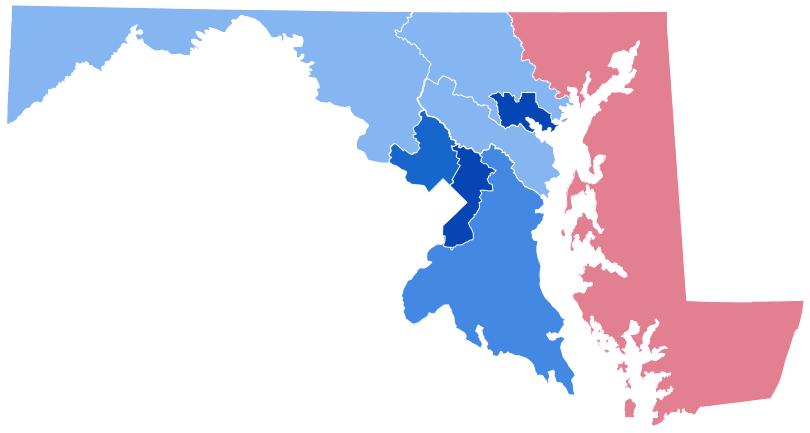Rev. Henry Highland Garnet and the Women in His Life

Born into slavery in Kent County, Md., Henry Highland Garnet escaped with his family when he was 9 years old. Growing up and being educated in New York City, he was ordained as a Presbyterian minister. Garnet was active in the struggle to end slavery and racism and supported education and civil rights for all, including women.
He was influenced by the three women in his life. His mother was admired by his friends as beautiful, intelligent, and strong and wanted her children to have an education. Garnet’s first wife, Julia Williams Garnet, was educated — rare for a woman in those days — and an abolitionist and educator. Garnet’s second wife, Sarah Smith Tompkins Garnet, was a suffragist, civil rights activist, and the first Black principal of a school in New York City.
Elizabeth Garnet, His Mother
In a speech to Congress in 1865, Henry Highland Garnet remembered his mother eloquently. “My earliest recollections of parents, friends, and the home of my childhood are clouded with [slavery’s] wrongs. The first sight that met my eyes was a Christian mother enslaved by professed Christians, but, thank God, now a saint in heaven.”
Elizabeth Garnet was described by a close friend of Henry’s as “comely, beautiful, and tall, with a bright, intellectual face and lustrous, laughing eyes.”
James McCune Smith, who knew Garnet’s mother, described her as “a woman of extraordinary energy, industrious, pious, and holding at the highest value that education from which her condition had debarred her and continued to debar her children.”
Garnet’s family escaped from slavery in 1824. They settled in New Hope, Bucks County, Pa., where Garnet entered school, and then moved to New York City in 1825.
Julia Williams, His First Wife

Julia Williams was Garnet’s first wife and longtime companion in activism for abolition. She was born free in Charleston, S.C., in 1811, and moved to Boston as a child.
At the age of 21, Williams traveled to Canterbury, Conn., to attend Prudence Crandall’s academy until Crandall was imprisoned for teaching Colored girls. After the school closed, Williams went to Noyes Academy in Canaan, N.H., where she met Garnet, who was also a student there. In 1835, the Canaan Academy was destroyed by local men, who dragged the school building into a swamp and burned it. They threatened to attack the Black students with rifles, but Garnet quickly fired a warning shot as they approached on horseback. The Black students were forced to leave Canaan.
Williams completed her education at the Oneida Institute in New York where Garnet and his friends also went to study in 1836. She was the only female student there.
Williams taught school in Boston for several years. She was an outspoken member of the Boston Female Anti-Slavery Society that believed “slavery was a violation of divine law” and sought immediate emancipation.
In 1837, Williams attended the first Anti-Slavery Convention of American Women in New York, where she and Garnet met again.
Garnet wrote about Williams to his close friend Alexander Crummell, “The ladies would not admit any males [to the convention] therefore I can tell you nothing about them more than that Miss Julia Williams of Boston was one of the delegates and I had the pleasure of waiting upon her six or seven times, and dined and supped with her. What a lovely being she is. Modest, susceptible, and chaste. She seems to have everything which beautifies a female, a good Christian, and a scholar. I don’t want you to think that I am in love, yet I shall keep a correspondence with her.”
After graduating from Oneida with honors, Garnet returned to New York City in 1840, where he taught in the Colored district school and conducted religious meetings in the First Presbyterian Church. The next year he was ordained and he and Williams married. They had three children, James, Mary, and Henry, but only Mary survived to adulthood.
In 1843, Julia Garnet helped Garnet prepare his address to the Annual Convention of the Colored Citizens of New York State at Buffalo. He recognized her collaboration in a letter he wrote to Maria Chapman, who had criticized his address. He wrote that Julia Garnet was the only one who gave him counsel regarding the address, but “if she did counsel me, it is no matter, for ‘we twain are one flesh.’”
Garnet’s address became famous for urging the enslaved to: “Arise! Strike for your lives and liberties. Now is the day and the hour. Let every slave throughout the land do this, and the days of slavery are numbered. You cannot be more oppressed than you have been — you cannot suffer greater cruelties than you have already. Rather die free men than live to be slaves. Remember that you are FOUR MILLIONS!”
In a report given by his committee to the convention in 1844, Garnet recommended efforts to improve opportunities for education for men and women. He wrote that in New York City, there was only one high school for Colored youths and in the entire country they could find no other college or female seminary for Colored children. In 1848, Garnet established a weekday school for children and preached on Sundays.
In 1850, Garnet traveled to England with his wife and children to lecture on the anti-slavery movement in the U.S. In 1852, the United Presbyterian Church of Scotland sent him as their first Black missionary to Jamaica, where he organized a school and Julia Garnet directed a female industrial school. When he fell ill, they returned to New York City.
In 1864, Garnet was called as pastor to the 15th Street Presbyterian Church in Washington, D.C., where he became a friend of President and Mrs. Lincoln.
“When the U.S. Army failed to supply nutritional diets to newly mobilized New York U.S. Colored Troops recruits, 40 Black women took it upon themselves to establish the Ladies Committee on January 25, 1864, with Julia Garnet as their president to address this glaring issue at the military camp.”
After the war, Julia Garnet worked with freedmen in Washington, D.C., to establish their new lives.
Julia Garnet died in January 1879 in her home in Allegheny City, Pa., at age 58. (Garnet was then president of Avery College, a school of religious education for African Americans in Pittsburgh.) Her obituary in The Christian Recorder reads: “Her devotion to the anti-slavery cause and her sacrifices for the fleeing fugitives may not be recorded by human pen, but the recording angel has written them. ‘Nothing makes death evil but what follows it.’ In this sense, and in a far higher sense, death was no evil to Julia Garnet. The living will embalm the sacred memory of her virtues in their hearts. They will strive to emulate them”.
Sarah Smith Tompkins, His Second Wife

Sarah Smith Tompkins was born in 1831 in Brooklyn, N.Y., the oldest of 11 children. Her parents were farmers and owned land in Queens County, Long Island. She married Samuel Tompkins who died in 1852. In 1854 she began teaching in New York City at the African Free School of Williamsburg. She was appointed principal of Manhattan’s Colored School No. 7 on West 17th St., the first African American female principal in the New York City public schools.
Tompkins married Garnet in 1875.
In his later years, Garnet went to Liberia as U.S. ambassador, appointed by President James Garfield. He died there on February 13, 1882. Meanwhile, Sarah Garnet remained in the U.S. She was an active supporter of women’s suffrage and of African American civil rights. She founded the Equal Suffrage League in Brooklyn, and was superintendent of suffrage for the National Association of Colored Women.
Along with the president of the league, Dr. Vienna Harris Morton Jones, Sarah Garnet supported the creation of the Niagara Movement, which demanded equal rights for all Americans.
In 1911, Sarah Garnet traveled to London for the inaugural Universal Races Congress, where her sister, Susan Steward, presented a paper. Soon after they returned from Europe, Sarah Garnet died at home on September 17, 1911. She is buried in Green-Wood Cemetery in Brooklyn.
Henry Highland Garnet’s mother and wives held education as a priority and Christianity as their moral foundation. His mother set these standards and his wives shared these convictions. He and his wife Julia Garnet were true companions. They experienced similar troubles and adventures in their youth. They studied, taught, and worked for better lives for African Americans — lives without slavery and with the vote. They collaborated in their endeavors. Sarah Garnet accompanied him in his later years. She, too, had become educated and worked as a teacher and school administrator. All four had a deep sense that education was a necessary way forward and they practiced the Christian value of love for all.
Another resource:
Shivers, George, “Henry Highland Garnet, Abolitionist and Fighter for Justice”, Key to Old Kent, 9(1), 2015
Photo source:
Jeanette E. Sherbondy is a retired anthropology professor from Washington College and has lived here since 1986. In retirement she has been active with the Kent County Historical Society and Sumner Hall, one of the organizers of Legacy Day, and helped get highway /historical markers recognizing Henry Highland Garnet. She published an article on her ethnohistorical research of the free Black village, Morgnec.
Common Sense for the Eastern Shore







